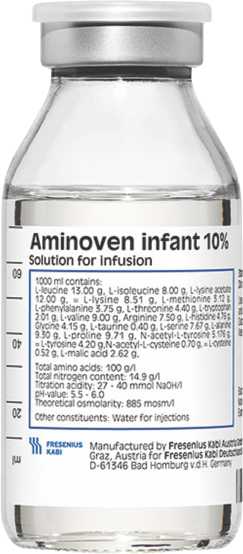- An amino acid solution for parenteral nutrition of preterm & term newborns, babies , infants and young children
- Excellent nutritional efficacy for growth and development, with high tolerance and safety.
- Contains a well balanced amino acids pattern with:
- 52% essential amino acids
- Taurine which is an essential nutrient for neonates
- Cysteine & tyrosine that are not synthesized in sufficient amounts
- Low contents of methionine & phenylalanine due to their limited degradation rate
4. Further there is no risk of metabolic acidosis and no risk of allergic reactions
